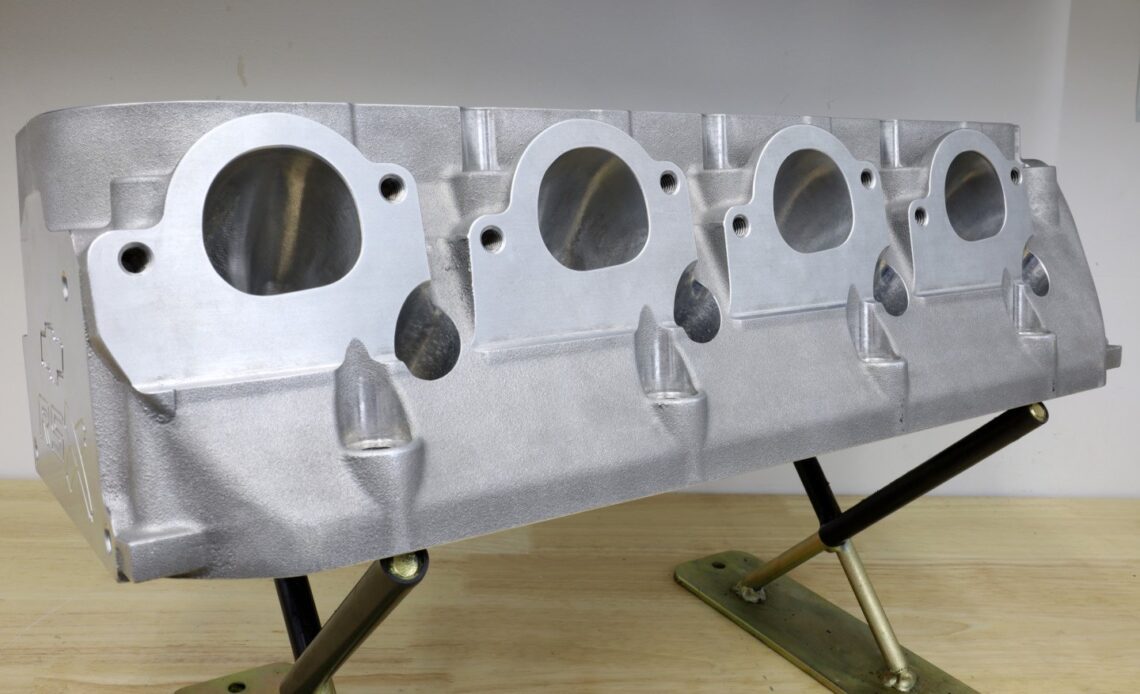The bigger is better philosophy is alive and well with Chevrolet Performance‘s latest big-block ZZ632 performance engine that punches out slightly more than 1,000 horsepower on 93-octane pump gas. Standing tall behind that mound of horsepower is what the engine was built around; a hefty pair of CNC’d aluminum RS-X cylinder heads.
These heads are different than anything GM has designed for production and we wanted to know more about them. So we spoke with the man in charge of production for Chevrolet Performance, Alin Dragoiu, DRE-Performance Parts Global Propulsion Performance and Racing Engines. Prior to this assignment, he worked on Chevrolet’s new engine block for NASCAR and the Cadillac ATS-V.R twin-turbo V6 for World Challenge racing.
The RS-X heads are different than anything GM has produced for the aftermarket with their raised, spread ports. They are more similar to LS heads than anything else.
Pro Stock Roots
Dragoiu says the original cylinder head design started life around 1986 as symmetrical port Pro Stock racing heads. “When they became available, the NHRA rules allowed a different design (4.840 bore spacing), and the heads were ultimately never raced.”
The heads were not scrapped, however. They were even available in the Chevy Performance catalog for years. Around 2017, Dragoiu says the engineering team started redesigning the current big-block and the big spread-port heads ultimately became the foundation for the RS-X heads. “As a racing head, the freedom was there to explore improvements on the big-block head such as symmetrical ports and different valve angles.”
Port Variations
Traditionally, big-block Chevy cylinder heads have port shape variations from cylinder to cylinder to make room for pushrods and head bolts and such. But the spread port design allowes the intake ports to be the same length, volume (449cc), and layout. The exhaust ports are also identical to each other at 161cc. The head also utilizes titanium valves that measure 2.450 inches on the intake and 1.800 inches on the exhaust, with 5/16-inch. stems. The valve springs are a beehive style with a 1.589-inch diameter.

The RS-X exhaust-port face is rolled four degrees from the standard big block, and the pattern is raised around 1.1 inches, so custom headers are required. The benefit of the spread port design is that each intake port is now the same across the head.
According to Dragoiu, the biggest difference with the RS-X head is the symmetrical…
Click Here to Read the Full Original Article at DragzineDragzine…

